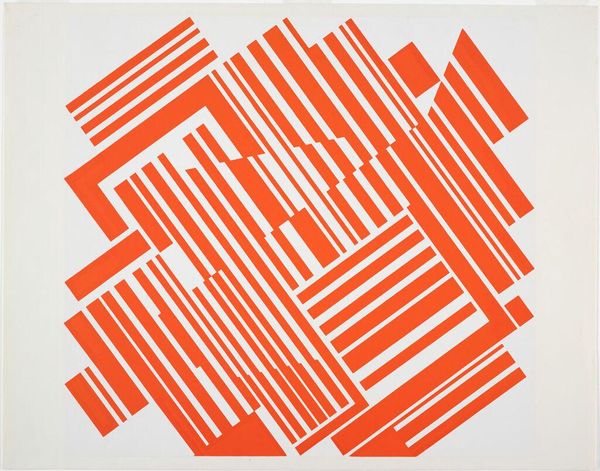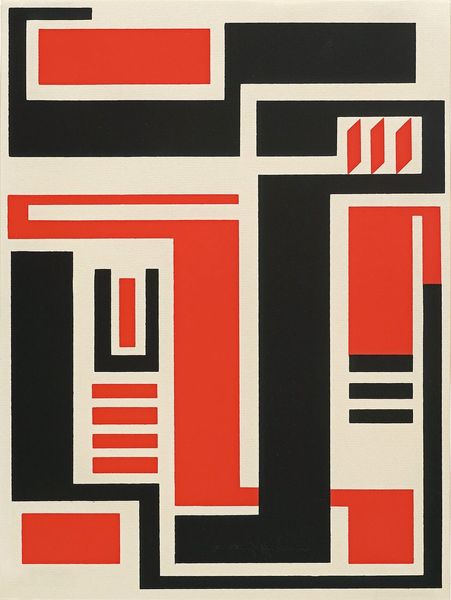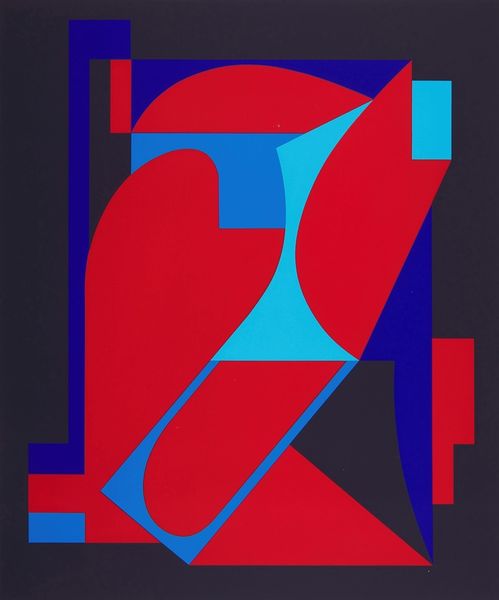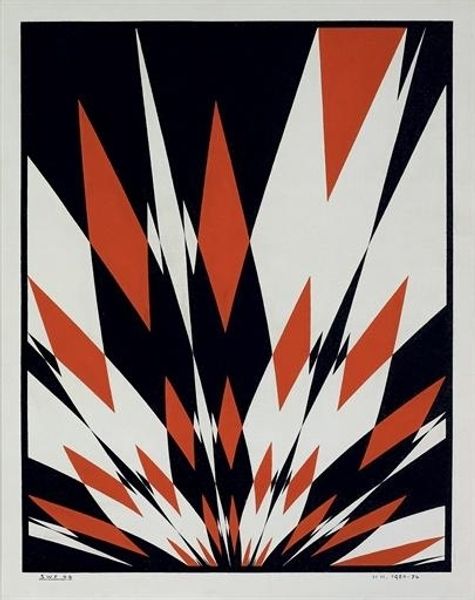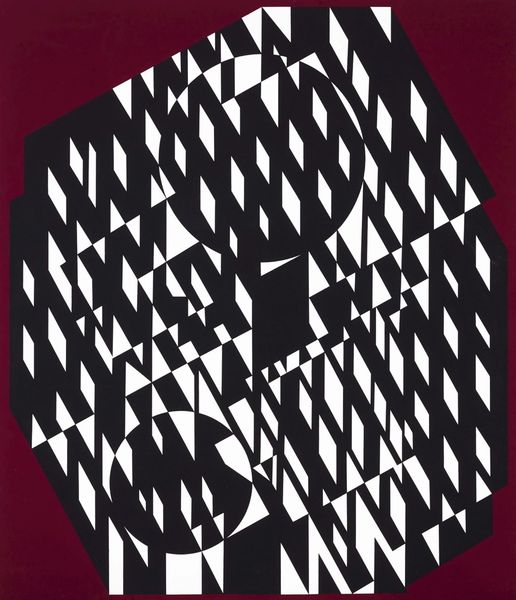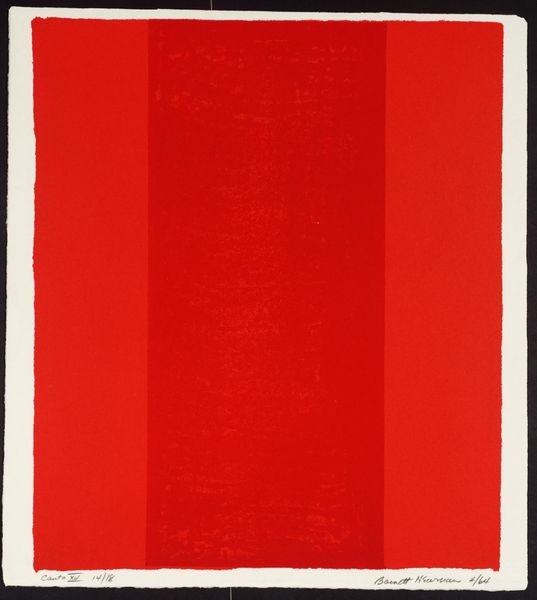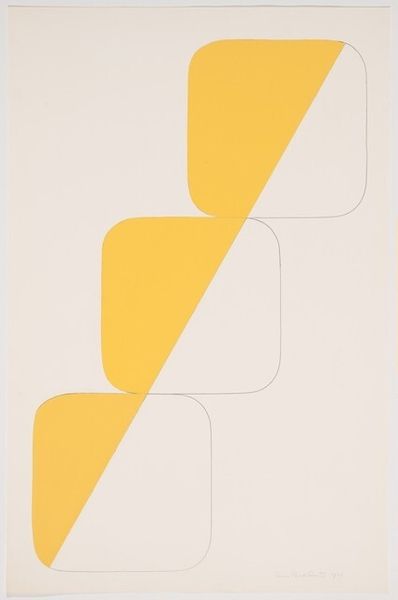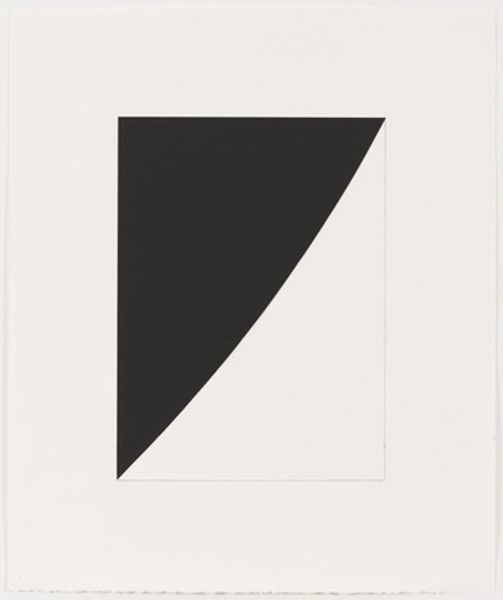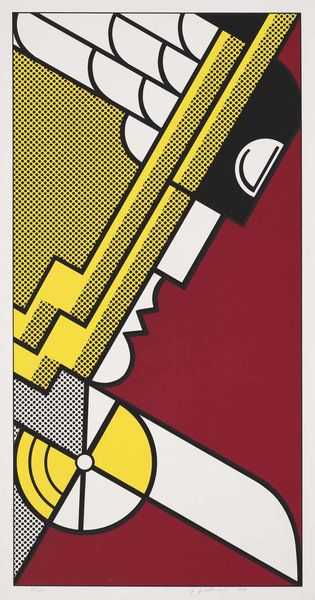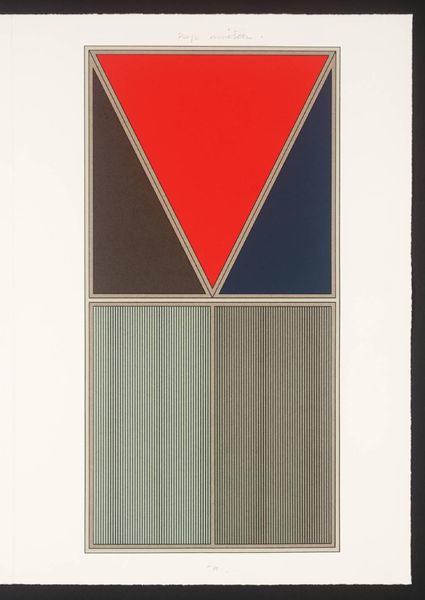
Copyright: National Gallery of Art: CC0 1.0
Editor: This untitled print by Burton Wasserman from 1975 immediately strikes me as bold and unsettling, the stark red and white geometric shapes create this feeling of… imbalance. What do you see in this piece? Curator: Imbalance, yes, that resonates. Consider the symbolism inherent in geometry itself. The square, traditionally associated with stability and order, is disrupted here by the diagonals. The bars suggest confinement but also perhaps, the binary code of an increasingly digital world. Editor: So, are you suggesting that the bars themselves, the ordered, tight vertical lines represent coding in the upcoming digital information era? Curator: Possibly. The period matters, 1975 is a time of transition. Hard-edge painting was reacting against the gestural freedom of abstract expressionism. Look how Wasserman both embraces and subverts the expectations of that movement. This print evokes the cultural memory of order struggling against disruption, of the rational mind confronted by the anxieties of technological advancement. Editor: The more I look, the more those sharp diagonals seem almost violent, cutting across the structure of the squares. Curator: Exactly! What could this symbolise, given what we said previously? This violence echoes not only personal struggle but also potentially a societal fracture; perhaps a sense of lost equilibrium from a society moving to computer code and away from familiar forms. Does that read? Editor: Definitely, I hadn't thought about it that way before. Seeing it as a visual representation of societal tension between order and technological anxiety makes a lot of sense. Curator: These stark visual elements gain even deeper resonance from an understanding of both the hard-edge art movement's reaction to previous norms, and its echoes with psychological unease. Visuals become memory, then icons of future continuity. Editor: I learned that, although simple, this kind of art needs background research to reveal all of the historical, personal and social trauma it carries.
Comments
No comments
Be the first to comment and join the conversation on the ultimate creative platform.
